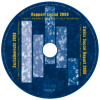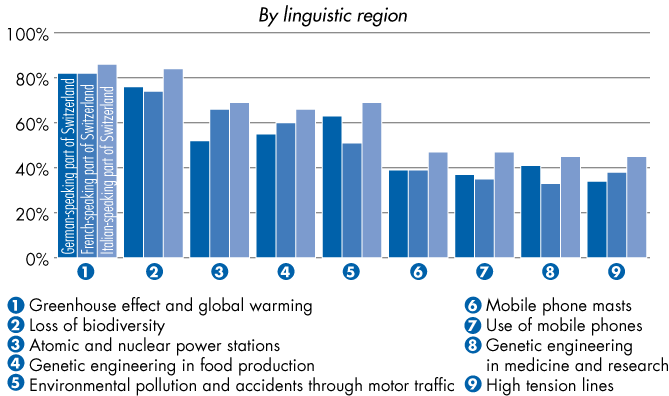Environment and society
Evaluation of threats to the environment
![]()
Evaluation of threats to humans and the environment 2007. Answers with 'high' in %, by linguistic region
Question wording: ‘The following questions are about the evaluation of threats from different technologies and environmental problems in Switzerland. Please use again a scale from 1 to 5, with 1 indicating “not dangerous at all” and 5 indicating “very dangerous”. You may use the numbers in between to grade your evaluation. How dangerous do you think genetic engineering in medicine and research is for humans and the environment? How dangerous do you think genetic engineering in food production is for humans and the environment? How dangerous do you think atomic and nuclear power stations are for humans and the environment? How dangerous do you think mobile phone masts are for humans and the environment? How dangerous do you think use of mobile phones is for humans and the environment? How dangerous do you think high tension lines are for humans and the environment? How dangerous do you think environmental pollution and accidents through motor traffic are for humans and the environment? How dangerous do you think the greenhouse effect and global warming are for humans and the environment? How dangerous do you think for humans and the environment? How dangerous do you think the loss of biodiversity is for humans and the environment, thus if there are less and less species of plants and animals?’
Answer categories: scale from 1 (not dangerous at all) to 5 (very dangerous). Percentages correspond to respondents who indicated values 4 and 5.
Sample size: Swiss Survey on the Environment 2007: 3369; weighted data.
Source: Swiss Survey on the Environment 2007, ETH Zurich.
Data for the indicator or in excel.
Description and explanation in the corresponding chapter of the Social Report 2008.

